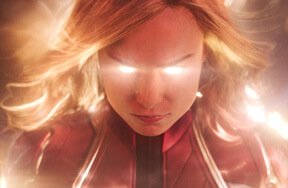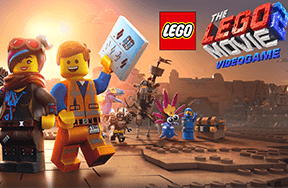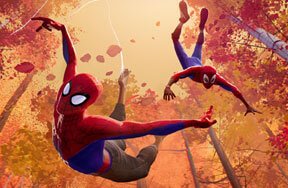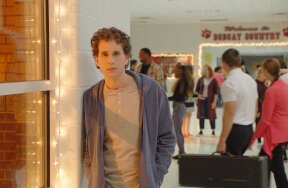Kidzworld recently got to spend a day at Sony Animation studios to meet and see the awesome animators of Spider-Man: Into the Spider-Verse in action. They showed us some awesome behind the scenes footage and special features that will be on the Blu-ray and shared with us what they loved about making the movie and being artists! If you’ve ever thought about taking up animation and loved Spider-Man: Into the Spider-Verse, this trip report is for you!
Bonus Clip "Anyone Can Wear the Mask"
When talking about what makes the movie so cool, the directing team behind the film chops it up to the appeal of Miles Morales, the new Spider-Man, and all the Spider-People. Rodney Rothman, director of Spider-Man: Into the Spider-Verse said, “It’s the multi-verse, the options are infinite. The backstories of the Spider-People were longer and we whittled them down to the nuggets you saw in the movie. There’s so much there to tie together. Coolest part has been how much people embraced the story and the characters and the emotion behind the story, the depth of the emotion. People have reacted very positively at that which we’re psyched about. People have reacted very positively to what the movie looks like and how it doesn’t quite look like things that people may have seen before. Everything going forward in the Spider-Verse and outside it for us is about continuing to push those things: the emotional storytelling, pushing the visual storytelling into new places and new immersive worlds even if it's your backyard. It’s still a young art form.”
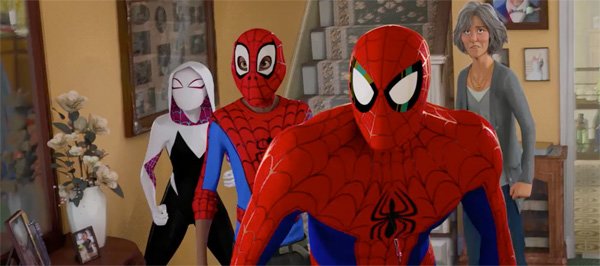 Miles, Gwen, and the team work together to save the Spider-Verse
Miles, Gwen, and the team work together to save the Spider-Verse
Motto if it ain’t broke, BREAK IT!
The anchor of the world was the aesthetic, or style, of the comic books. The team at Sony Animation created a happy medium of CG realism and classic cartoon animation. By stylizing the camera to not feel like reality, allow flaws in the anatomy of characters and world, they found a sincerity to how these characters spring to life as opposed to creating an idealized and appealing animated world. It’s rough around the edges on purpose. It’s a world of paint and ink--like smudges on comics and misprints. For this look, they animated in twos, a traditional technique on CG Animation.
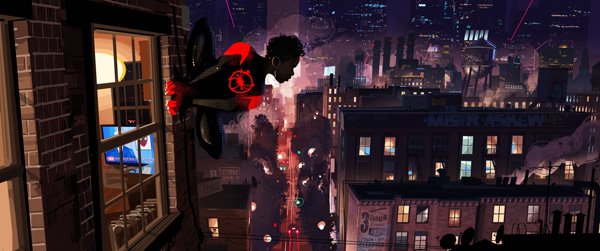 Brooklyn cradles its new web-slinger.
Brooklyn cradles its new web-slinger.
“I just was one of those kids that drew on every desk and filled up sketchbooks. I just couldn’t stop ever drawing. It wasn’t till I was thinking about college and my grandfather suggested this school in Florida that had a cool animation program and that was like the first lightbulb where I realized I always loved movies but I thought it was a hobby. I’ve always loved drawing and animation makes both of those passions come together. Went to school for that for four years. There are lots of online schools too and those are great ways to get in too.”, shared Josh Beveridge, head of Character Animation, on going to school but once learning the ropes being able to twist and make something new.
 Sketch lines show who these characters are from their earliest designs
Sketch lines show who these characters are from their earliest designs
Anyone Can Wear The Mask
One of my favorite people to talk to that day was storyboard artist Denise Koyama. She broke down how animators get the script in sequences they have to sketch storyboards for. Whether it’s action, comedy, or drama, the whole team works on different sections to give directors different options. Denise loved working on the action sequences for Spider-Gwen. “I really liked working on Gwen Stacy because you know Woman! I did a lot of fight sequences with her. Her action, I tried to make it more 3D, moving the camera around and making it more fun. I personally loved Jefferson. He’s the real superhero, he’s like the cop and the great dad--a great example of a role model. I was most shocked by Spider-Ham. Spider-Noire was fun and then Peni and SPDR were really fun.” she said.
 Spider senses are tingling!
Spider senses are tingling!
Like Miles’ family, Koyama’s family encouraged Denise toward her passion but while also minding secure routes first before jumping into a creative world. Sorta like how Miles wanted to go into art, “I always liked to draw but my parents were always like, ‘This is a good hobby but you can be a doctor’! And I wanted to make them happy so I went and was a pre-med student and volunteered at hospitals and did research. It wasn’t for a long time, because you’re going from doctor = secure to an artist.” Denise described, “In their brain, it was like ‘You’re gonna be on the beach trying to sell paintings!’ And I was like people can actually make careers, everything in this room has all been designed by an artist. There’s gotta be jobs out there. My parents didn’t know anything about art and one of the persons my dad knew had a daughter who went to art school and she did well. So my dad was like, ‘Okay, you have this one chance! If you get accepted you can go and do your art thing but if you don’t you have to go back to pre-med. I took a community college art class, I didn’t know what a portfolio was but I had a sketchbook so I turned that in. On the strength of my sketchbook, I went to Art Center. I learned how to draw and then I got a job and have been storyboarding ever since! Sony has been a great place to do everything and they're very open to experimenting.” -Denise Koyama, Story Artist.
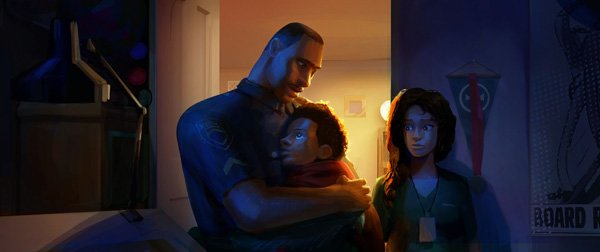 In Spider-Verse, Miles has a family just like yours and mine!
In Spider-Verse, Miles has a family just like yours and mine!
In animation, artists and writers can be so many things. They can act out reactions for a scene, record themselves and use that to see how to animate it. In this way, they make the characters familiar and work toward a collaborative goal of creating a new visual language. Art over realism, playing with the palate with splatters and messy lines. Characters and environments created out of risks. A cool Easter Egg is all the Easter Eggs, lots of fans will enjoy the twist of other dimension versions of pop culture. Even, Stan Lee was immortalized many times outside of the best Stan Lee cameo where he gives Miles his first suit. The Marvel legend is used as a model many times and appears so often in the background. He’s in the movie more times than you can count.
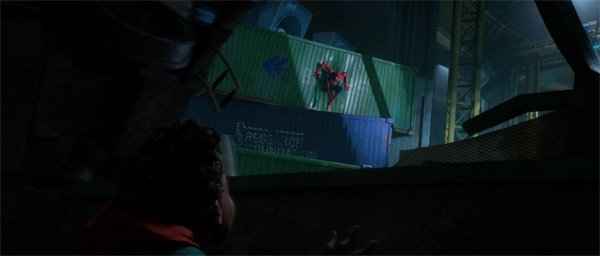
Enough Beautiful Things Done Wrong Can Look Right
The now iconic image and poster of Miles jumping as Spider-Man was born out of bold choices. The details start as just a little off and as he leaps off the building the warp wraps itself around miles like he’s getting a welcome embrace by his city.
“I would go to comic book shops and buy comic books based on images. For me, it was more about the visual language. I love it and to try to figure out how to make it move. That's what I was so excited to figure out how to do. Spider-Man is one of the first characters I learned to draw because all the little web lines on him make it easier to learn anatomy, figure out perspective, and all those things. You don’t even know that's why you like it, you get drawn to it. That's the beautiful thing about this design and why it’s been so iconic for so long.” Josh Beveridge shared about being able to evolve his longtime love of drawing comics in the movie. They wanted to make sure all the frames felt like a comic book. The texture of stacked images, with an out of focus look. A racking lens blur that tells you where to look without softness.
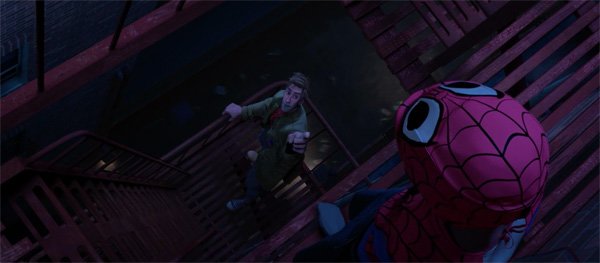 Mentors are important even if they’re stubborn and grumpy!
Mentors are important even if they’re stubborn and grumpy!
Danny Dimian, VFX supervisor, shared with us how his two career dreams melded and led him to use those strengths in Spider-Man: Into the Spider-Verse, “I’d always liked art but I graduated in computer science. When I had graduated and been working as a computer programmer that’s when the first Pixar shorts came out. I saw that and I kind of had a realization that not only would it be amazing to work in animation but those, they kind of showed that there was going to be a whole new world and language and way to make animation using computers and art.”
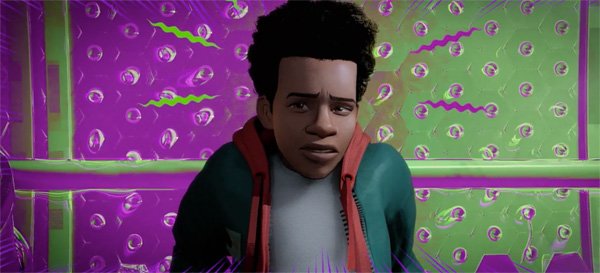 Miles feels like he’s changed after the bite from a radioactive spider.
Miles feels like he’s changed after the bite from a radioactive spider.
Using the linework to bring out emotion in the animation but melded with new tech to give it a cinematic feel was so important. The use of shadows, lighting, lines, and out of focus backgrounds to bring us into the inner world of Miles was the way into this new style. Artists found a lot of freedom in the details that are off, coming together just right. All the characters became their own Spider-People by exploring various stylized techniques. The shapes of 2D landscapes combined with effect simulations crafted a playground in which frame by frame something new and exciting could pop up.
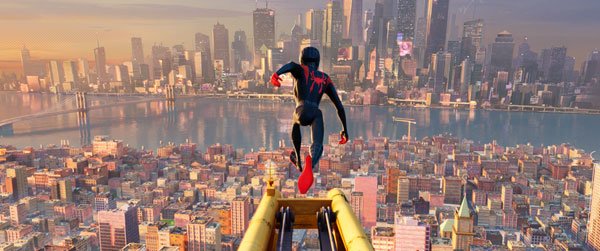 Can’t wait for more of Miles’s Adventures in the Spider-Verse.
Can’t wait for more of Miles’s Adventures in the Spider-Verse.
Seriously, pause the movie and look at the screen!
While we’re bummed that the movie is leaving theaters, one of the directors shared his hope for it’s legacy to come back on the biggest screens possible. “I was talking to someone about a possible recurring screening, in IMAX 3D. The equivalent of ‘Hey, how many times have you seen Nightmare Before Christmas in theaters during Halloween?’ There’s a version of that, at least in my mind for Spider-Verse in IMAX 3D where it becomes an annual movie. Could be a Christmas movie, we have Christmas Carols. Maybe I was pitching that to my kid”, said Bob Perchetti, director of Spider-Man: Into the Spider-Verse
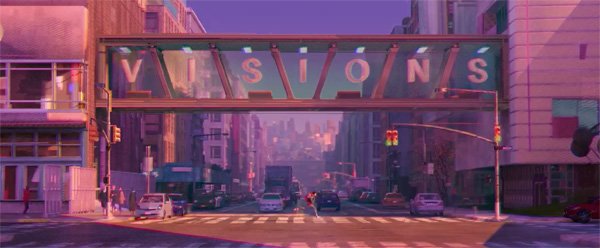 Seeing Miles in a school setting grounds who he is, he’s a kid who gains great power.
Seeing Miles in a school setting grounds who he is, he’s a kid who gains great power.
I mean, what better way to see it?
We can’t wait to see movie over and over again to check out all the little Easter Eggs, creative frames and artists’ signatures all over the movie. You can even watch the film in ALTERNATE UNIVERSE mode which features a Spider-Ham short film before the movie and is an all-new viewing experience where you can discover alternate scenes with more plotlines and characters as the filmmakers guide you. It’s like an animation tour but in the comfort of your home!
Spider-Man: Into the Spider-Verse swings onto Blu-ray and DVD March 19th!

Tell Us What You Think
Are you interested in becoming an animator? Did movies like Into the Spiderverse inspire you? Or learning more about the craft? Let us know in the comments!




























